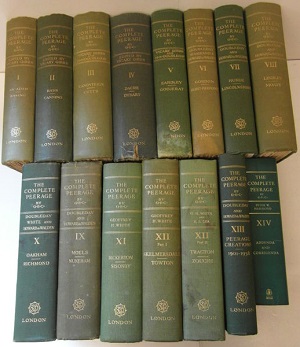Duke of Buckingham, referring to Buckingham, is a title that has been created several times in the peerages of England, Great Britain, and the United Kingdom. There have also been Earls of Buckingham and Marquesses of Buckingham.
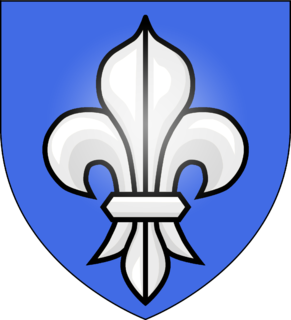
Earl of Bristol is a title that has been created twice in British history. The first creation came in the Peerage of England in 1622 in favour of the politician and diplomat John Digby who served for many years as Ambassador to Spain, and had already been created Baron Digby of Sherborne, in the County of Dorset, in 1618, also in the Peerage of England. Digby was the brother of Sir Robert Digby of Coleshill, Warwickshire, whose son Robert Digby became 1st Baron Digby of Geashill in the Peerage of Ireland in 1620..

Earl of Berkshire is a title that has been created twice in the Peerage of England. It was created for the first time in 1621 for Francis Norris, 1st Earl of Berkshire. For more information on this creation, see the Earl of Abingdon and also the Earl of Lindsey. The second creation came in 1626 in favour of Thomas Howard, 1st Viscount Andover. He was the second son of Thomas Howard, 1st Earl of Suffolk, second son of the second marriage of Thomas Howard, 4th Duke of Norfolk. His mother was Katherine, daughter of Sir Henry Knyvett of Charlton in Wiltshire. Howard had already been created Baron Howard of Charlton, in the County of Wiltshire, and Viscount Andover, in the County of Southampton, in 1622. These titles are also in the Peerage of England. Lord Berkshire succeeded to the Charlton estate through his mother in 1638. He was succeeded by his eldest son, the second Earl. He had already in 1640 been summoned to the House of Lords through a writ of acceleration in his father's junior title of Baron Howard of Charlton. He had no sons and on his death in 1679 the titles passed to his younger brother, the third Earl. He represented Wallingford in the House of Commons. He also died without male issue and was succeeded by his great-nephew, the fourth Earl. He was the grandson of the Hon. William Howard, fourth son of the first Earl. In 1745 he succeeded his third cousin as eleventh Earl of Suffolk. For further history of the titles, see the Earl of Suffolk.

Earl of Coventry is a title that has been created twice in the Peerage of England. The first creation for the Villiers family was created in 1623 and took its name from the city of Coventry. It became extinct in 1687. A decade later, the second creation was for the Coventry family and is still extant.
Baron Cromwell is a title that has been created several times in the Peerage of England. The first creation, which was by writ, was for John de Cromwell in 1308. On his death, the barony became extinct. The second creation came in 1375 when Ralph de Cromwell was summoned by writ to Parliament as Lord Cromwell. His grandson, the third Baron, served as Lord High Treasurer to King Henry VI. However, on his death in 1455 the barony fell into abeyance between his nieces Maude and Joan. On Joan's death in 1490 the abeyance was terminated in favour of Maude, the fourth holder. When she died childless in 1497 the peerage once again fell into abeyance, this time between the daughters of the first Baron. The title remained in abeyance for over 400 years. However, in 1922 the Committee for Privileges of the House of Lords reported in favour of the petition for the termination of the abeyancy of Selina Frances Bewicke-Copley, wife of Brigadier-General Sir Charles Watson Bewicke-Copley. She was the daughter of Sir Charles Watson Copley, 3rd Baronet, and one of the co-heirs of Maud, daughter of the first Baron Cromwell. Selina died in 1923 and in July of the same year the abeyance was terminated in favour of her son Robert Godfrey Wolesley Bewicke-Copley, who became the fifth Baron. He notably served as Lord Lieutenant of Leicestershire. As of 2010 the ancient barony is held by his grandson, the seventh Baron, who succeeded his father in 1982. Having lost his seat in the House of Lords under the House of Lords Act 1999, in April 2014 he was elected at a hereditary peers' by-election as a Crossbencher.
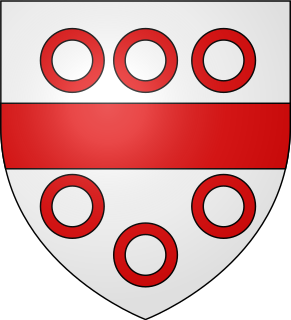
Baron Lucas is a title that has been created twice in the Peerage of England. The second creation is extant and is currently held with the title Lord Dingwall in the Peerage of Scotland.

Baron Dacre is a title that has been created three times in the Peerage of England, every time by writ.

Baron Stafford, referring to the town of Stafford, is a title that has been created several times in the Peerage of England. In the 14th century, the barons of the first creation were made earls. Those of the fifth creation, in the 17th century, became first viscounts and then earls. Since 1913, the title has been held by the Fitzherbert family.

Baron le Despencer is a title that has been created several times by writ in the Peerage of England.

Earl of Chichester is a title that has been created three times in British history. The current title was created in 1801 for Thomas Pelham, 2nd Baron Pelham of Stanmer in the Peerage of the United Kingdom.

Earl of Lonsdale is a title that has been created twice in British history, firstly in the Peerage of Great Britain in 1784, and then in the Peerage of the United Kingdom in 1807, both times for members of the Lowther family.

Earl of Strafford is a title that has been created three times in English and British history.

Earl of Worcester is a title that has been created five times in the Peerage of England. The first creation came in 1138 in favour of the Norman noble Waleran de Beaumont. He was the son of Robert de Beaumont, 1st Earl of Leicester, by Elizabeth of Vermandois, and the twin brother of Robert de Beaumont, 2nd Earl of Leicester. Like his father and brother he also held the title Count of Meulan in the French nobility. The earldom of Worcester apparently became extinct on his death in 1166.

Baron Grey de Wilton is a title that has been created twice, once in the Peerage of England (1295) and once in the Peerage of Great Britain (1784). Both creations are now extinct.

Lord Oliphant was a title in the Peerage of Scotland. It was created at least twice and possibly four times. The first creation is dormant and the others are all extinct. The third and fourth creations have not been defined in law.

Viscount Newhaven was a title in the Peerage of Scotland. It was created 17 May 1681 for Charles Cheyne, Member of Parliament and Clerk of the Pipe. He was made Lord Cheyne at the same time, also in the Peerage of Scotland. He married Lady Jane Cavendish, daughter of the first Duke of Newcastle and had a son, William Cheyne, who became 2nd Viscount Newhaven. William was a landowner in Chelsea, London, having purchased Henry VIII's palace. Upon his death on 26 May 1728 without issue, both titles becoming extinct.
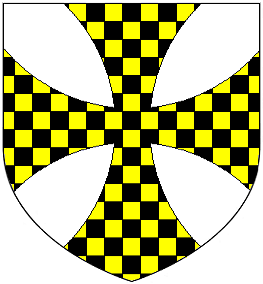
Baron Wenlock is a title that has been created three times, once in the Peerage of England and twice in the Peerage of the United Kingdom. The first creation came in 1461 when the soldier Sir John Wenlock was summoned to Parliament as Lord Wenlock. However, he was childless and on his death in 1471 the title became extinct.
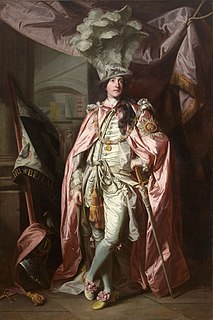
Earl of Bellomont, in the Kingdom of Ireland, was a title that was created three times in the Peerage of Ireland. The first creation came on 9 December 1680 when Charles Kirkhoven, 1st Baron Wotton, was made Earl of Bellomont. He had already been created Baron Wotton, of Wotton in the County of Kent, in the Peerage of England on 31 August 1650. He was childless and both titles became extinct on his death in 1683.
Baron Montfort is a title that has been created twice in British history. The first creation came in the Peerage of England when John de Montfort was summoned to parliament on 23 June 1295. In 1367 the title either became extinct or fell into abeyance on the death of the third Baron. The second creation came in the Peerage of Great Britain in 1741 when Henry Bromley was made Lord Montfort, Baron of Horseheath, in the County of Cambridge. He had previously represented Cambridgeshire in Parliament, as had his father John Bromley and grandfather John Bromley. Lord Montfort was succeeded by his only son, the second Baronet. He sat as Member of Parliament for the city of Cambridge. The title became extinct on the death of his son, the third Baron, in 1851.
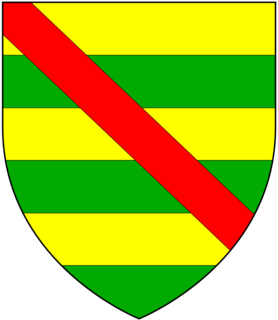
The title of Baron Poynings was created twice in the Peerage of England.












